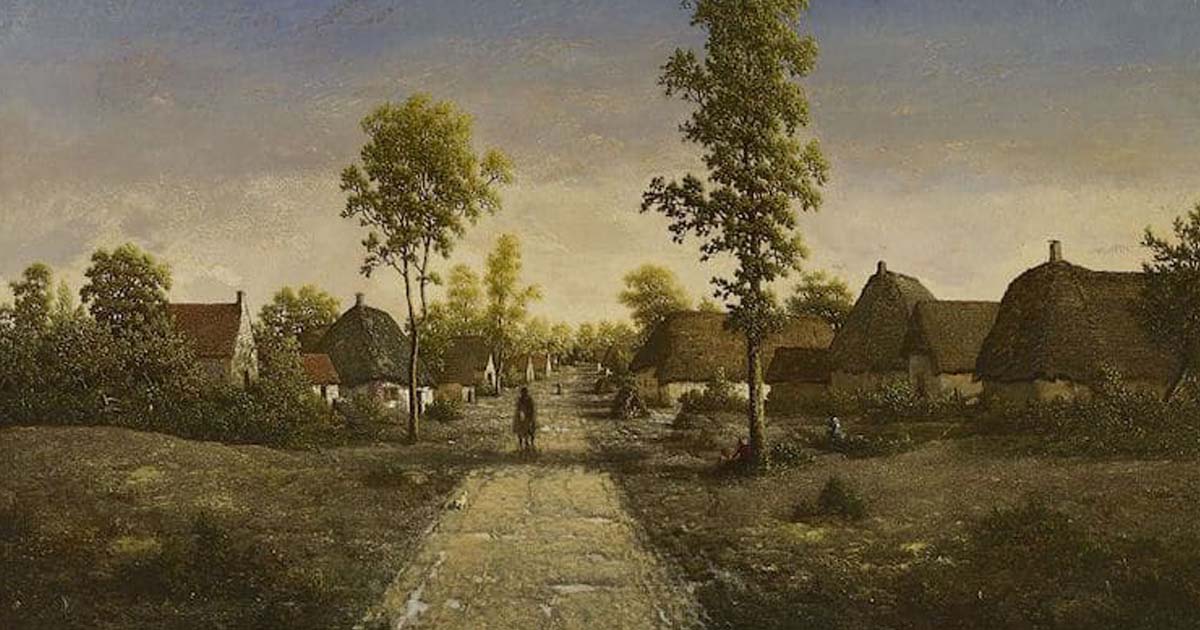The world of art is vast and diverse, with numerous styles and movements that have evolved over centuries. Among these, naturalistic painting stands out as a captivating form that seeks to replicate the appearance of the natural world with meticulous attention to detail and a dedication to realism. This article embarks on an exploration of naturalistic paintings, delving into their history, characteristics, and significance in the art world.
The Roots of Naturalism
Naturalism in art traces its origins back to the Renaissance period when artists began to focus on accuracy and detail in their depiction of nature, human figures, and the environment. This marked a departure from the more stylized and symbolic representations common in earlier periods. Artists like Leonardo da Vinci and Albrecht Dürer were pioneers, employing empirical observation and study to achieve lifelike accuracy in their works.
The Philosophy of Naturalism
At its core, naturalism is more than just a technique; it’s a philosophical approach to art. It embodies the belief that art should imitate nature as closely as possible. This philosophy was influenced by the scientific spirit of the age, reflecting a desire to understand and depict the world with precision and fidelity.
Evolution Through the Ages
As we move forward in time, the 17th century brought about the Baroque era, which saw artists like Rembrandt and Vermeer enhancing naturalism with dramatic lighting and emotional depth. The 19th century witnessed a resurgence of naturalism, responding to the Romanticism movement, emphasizing realism in both urban and rural life as seen in the works of Jean-François Millet and Gustave Courbet.
The Techniques of Naturalistic Painting
Naturalistic artists employ a variety of techniques to achieve their goal of realism. This includes the use of perspective to create depth, careful observation of light and shadow, and a detailed rendering of textures and materials. They often worked outdoors, capturing the fleeting effects of light and atmosphere with precision.
Naturalism vs. Realism
While naturalism is closely related to realism, there are subtle distinctions between the two. Realism is broader, focusing on depicting contemporary life and society with a critical eye. Naturalism, on the other hand, emphasizes the accurate depiction of nature, including landscapes and animals, often with a more neutral, observational approach.
The Impact of Naturalism on Modern Art
Naturalistic painting has had a profound impact on various art movements that followed. It laid the groundwork for impressionism, with artists like Claude Monet taking naturalism in new directions by focusing on the effects of light and color over strict detail. It also influenced the development of photographic realism and hyperrealism in the 20th and 21st centuries.
Distinguishing Features of Naturalistic Paintings
Key features of naturalistic paintings include a keen attention to detail, a preference for realism over abstraction, and a faithful representation of the subject matter. These paintings often convey a sense of the sublime beauty of the natural world, inviting viewers to engage in a deeper appreciation of their surroundings.
Celebrated Naturalistic Artists
Beyond Leonardo da Vinci and Albrecht Dürer, the annals of naturalistic art are filled with illustrious names. The French artist Camille Corot, for example, bridged the gap between neoclassicism and impressionism with his delicate, luminous landscapes. In the United States, artists like John Singer Sargent captured the natural beauty of their subjects with unparalleled grace and skill.
Naturalism in Landscape Painting
Landscape painting is a genre where naturalism particularly shines. Artists such as John Constable in England and the Hudson River School painters in America sought to capture the majesty and variety of the natural landscape, focusing on light, weather, and seasonal changes with extraordinary detail and sensitivity.
The Role of Light in Naturalistic Paintings
Light plays a pivotal role in naturalistic paintings, used not just for illumination but as a tool to define form, create mood, and enhance realism. Artists studied the nuances of natural light, its interaction with surfaces, and its transient qualities, striving to replicate its effects with paint.
Challenges and Criticisms
Despite its achievements, naturalism has faced criticism for being too imitative and lacking the imagination and creativity seen in more abstract or conceptual art. Critics argue that strict adherence to reality can limit artistic expression and exploration. However, proponents of naturalism counter that the discipline and observation required to create naturalistic art are creative acts in themselves.
Naturalism in the Digital Age
In the digital age, naturalism has found new avenues of expression through digital painting and photography. These modern tools allow artists to achieve levels of detail and realism that were unimaginable in the past, pushing the boundaries of what naturalistic art can be.
The Educational Value of Naturalistic Painting
Naturalistic painting serves an important educational purpose by encouraging close observation and study of the natural world. It teaches artists to see more deeply and to understand the visual intricacies of their subjects, skills that are valuable in any artistic endeavor.
Naturalism Across Cultures
While this article focuses on Western traditions, it’s important to note that naturalism has appeared in various forms across different cultures and historical periods. From the detailed scroll paintings of East Asia to the vibrant nature studies of Indigenous cultures, the desire to capture the essence of the natural world is a universal human impulse.
The Future of Naturalism
As we look to the future, naturalism continues to evolve, incorporating new materials, techniques, and perspectives. The fundamental desire to depict the natural world with honesty and accuracy remains unchanged, but how artists achieve this goal is constantly being reimagined.
Conclusion: A Timeless Tradition
Naturalistic painting is a testament to humanity’s enduring fascination with the natural world. Through centuries of artistic exploration, it has remained a vital and compelling form of expression, capable of conveying the beauty, complexity, and subtlety of our environment. As we continue to face environmental challenges and shifts in our relationship with the natural world, naturalistic art reminds us of the value of observation, the importance of detail, and the power of representation. It stands as a bridge between art and nature, inviting us to look closer, see deeper, and appreciate the natural beauty that surrounds us.




